#145 images
Text
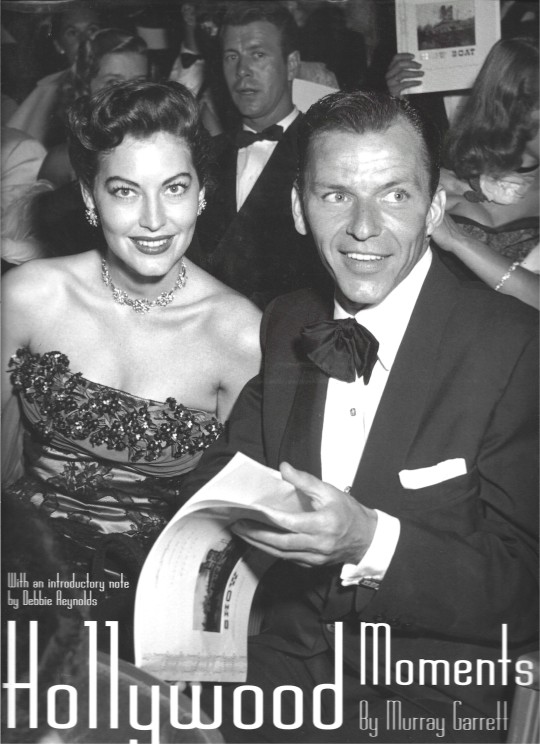
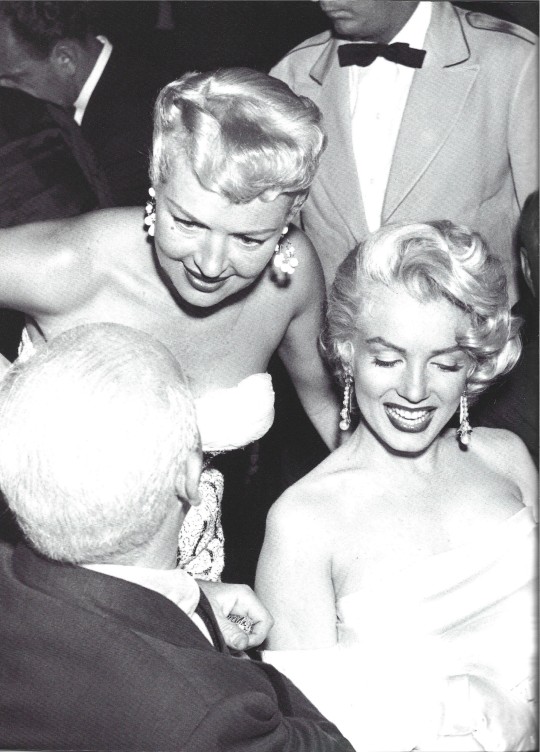



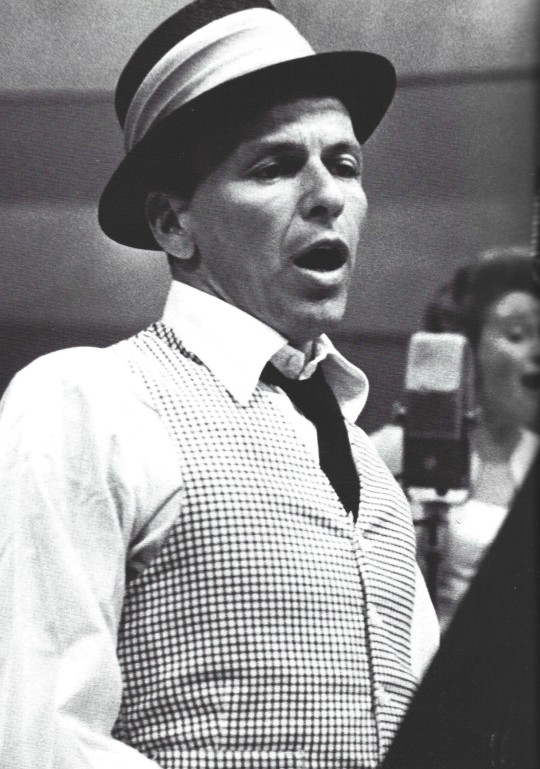
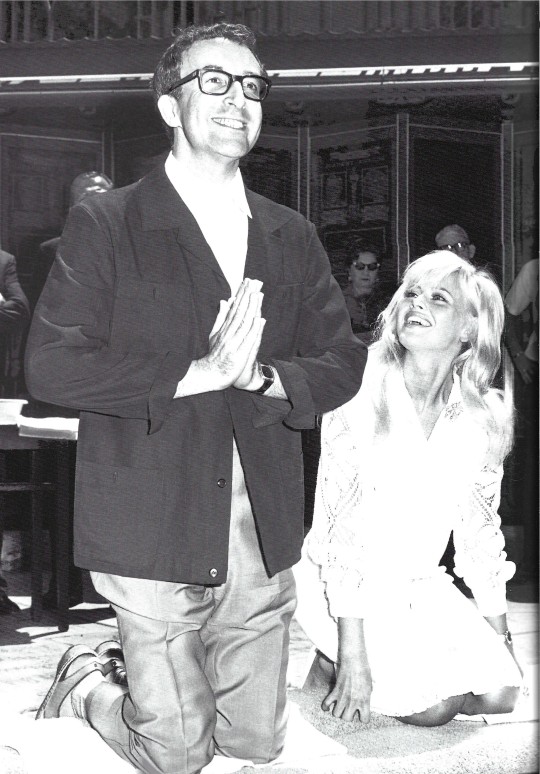


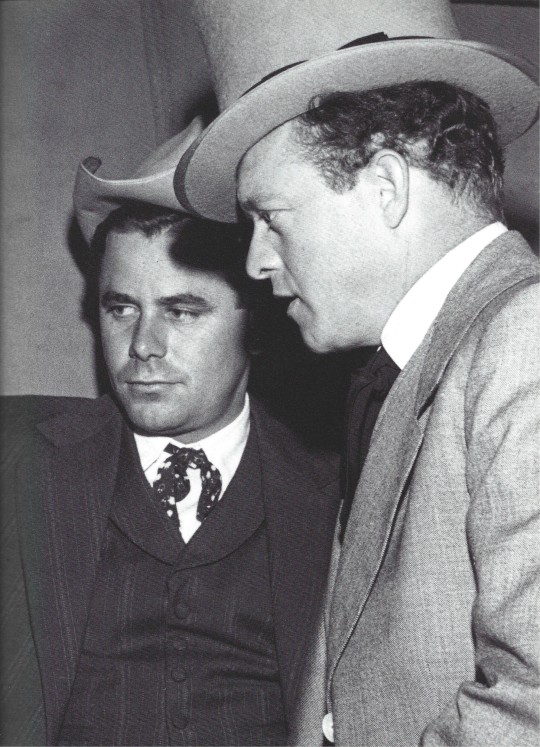

Hollywood Moments
By Murray Garrett
With an introductory note by Debbie Reynolds
Abrams, New York 2002, 178 pages, 24x30,5cm, 145 duotone photographa, ISBN 978-0810932425
euro 80,00
A follow-up to Hollywood Candid showcases 145 images of stars taken during intimate or irreverent moments, in a volume containing many never-before-seen photos and complemented by personal reminiscences.
he pathos of Old Hollywood emerges in this dazzling collection of black-and-white photos from the 40s, 50s and 60s. Celebrity photojournalist Garrett captured his subjects at nightclubs, industry soirées and parties-an in-between world where stars tried to enjoy their private lives while still very much on public display. Garrett maintained a studied reserve toward the celebrities (he made a point of never addressing them by their first names) and his photos have a appealing mixture of intimacy and detachment as the celebrities drink, laugh and carouse while tricked out in formal wear and immaculate hair-dos. He is especially fascinated with Hollywood divas like Elizabeth Taylor, Marilyn Monroe, Leslie Caron and Ava Gardner; his photos show the warmth of these vibrant personalities while hinting at the strain they suffered in maintaining their glamorous facades. The photos are accompanied by piquant reminiscences: of the wise-cracking Zsa-zsa Gabor shoving her way into every picture frame, the lovable Jimmy Durante shoving his way into oncoming traffic, and the thuggish Milton Berle shoving hapless underlings out of his dressing room. In one tense picture worth a thousand words, a vampy Lauren Bacall embraces Van Heflin while her husband, Humphrey Bogart, looks on ("I heard Bogey say, in a chilled tone, 'Van, that's close enough'"). In these lively, unlacquered but sympathetic portraits, celebrities emerge as flawed, human and never entirely free of self-consciousness.
17/10/23
#hollywood Moments#candid showcases#145 images#40s 50s 60s images#Elizabeth Taylor#Marilyn Monroe#Leslie Caron#Ava Gardner#Laureen Bacall#Humphrey Bogart#photography books#fashion books#fashionbooksmilano
41 notes
·
View notes
Text

123 notes
·
View notes
Text
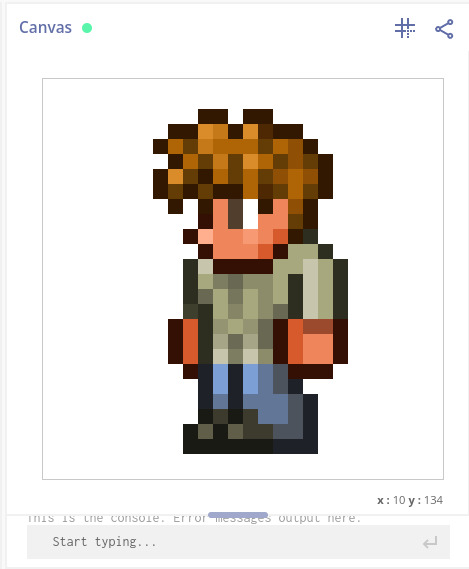
⭐️ - guide in the coding class cmu cs academy course sandbox
#⭐️ - this is not an imported image btw the code is 145 lines long and they’re almost all rectangles#terraria#terraria guide#repeated fallen star noises
10 notes
·
View notes
Text

The Lord is near to all who call upon Him, to all who call upon Him sincerely and in truth.
Psalm 145:18 AMPC
https://bible.com/bible/8/psa.145.18.AMPC
#faith#christian#bibleverses#verse image#visual verse#youversion#verse of the day#bible verse#bible#Psalm 145:18
9 notes
·
View notes
Text

Hey friends! I'm running a small sale on full body commissions, I'm taking 5 slots at $85 a character (down from my standard price of $100). I need more examples for my website, and I just want to draw some characters :3c alsooo if anyone's interested, I'm offering discounts on commissions of your character with my sona Sammy!
PLEASE NOTE, Your character *must* have a ref sheet or full body image I can work from. I'm not designing characters for these, sorry!
ALSO, please have an idea or pose in mind! It can be generic, like "playing a switch" or "enjoying the outdoors" but I need to have an idea to work from ^_^
LAST THING, I'm changing my shading/background style a bit from my past work, I'm not going to be offering detailed cel shading or backgrounds. Minimal shading and simple bg elements are fine! I've just been way too overwhelmed lately to take on complicated projects.
Sale prices are as follows:
- 1 character: $85
- 2 characters: $170
- Your character and Sammy: $145
Some more rules:
- my regular ToS applies!
- sfw and nsfw allowed! (ToS still applies)
- again, must have ref sheet or image of character.
- payments through Paypal invoice only.
- turnaround time will be 4-6 weeks!
- I may be slightly more picky than usual with these, I might pass up more complicated characters or ideas. Feel free to run ideas by me though!
DM me if you're interested in grabbing a slot, or have any other questions! ^w^
Stylistically they'll be similar to this! I can do a bit more detailed bg too, feel free to ask to see more examples.

#furry#furries#furry art#furry commissions#commissions#my brain has just been#Not Good lately#but i still need tax money! 10 days left >_>#and just general living money#so come get a full bod!#support your local dumb gay ass dogy
212 notes
·
View notes
Text
OPM Volume 29 Covers and Illustrations
Outer covers

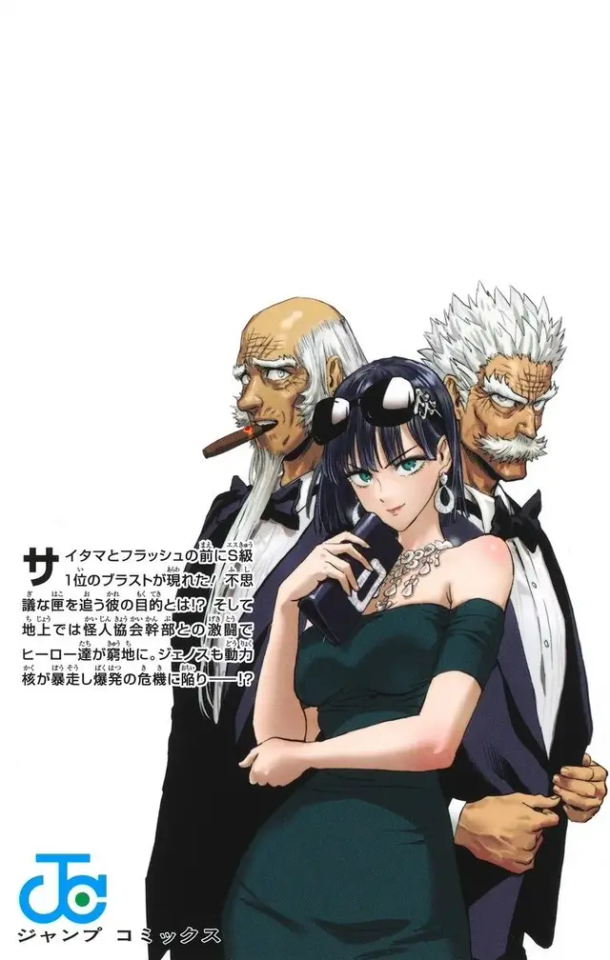
Inner covers
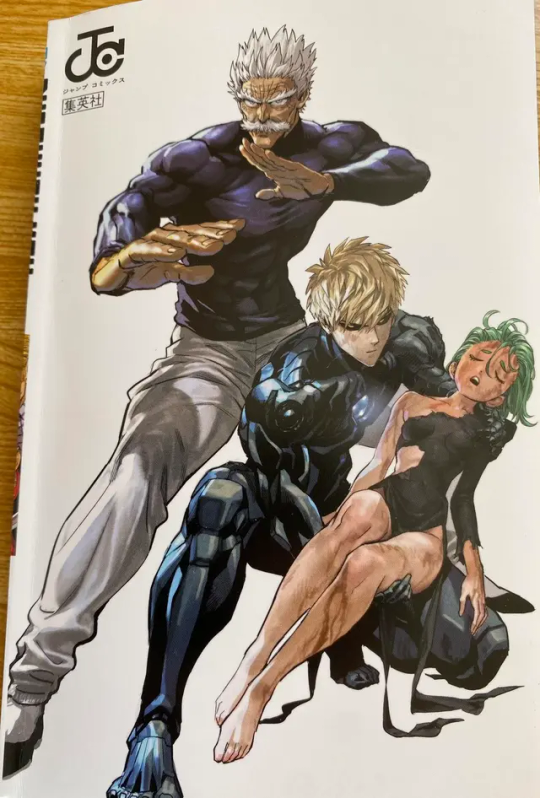

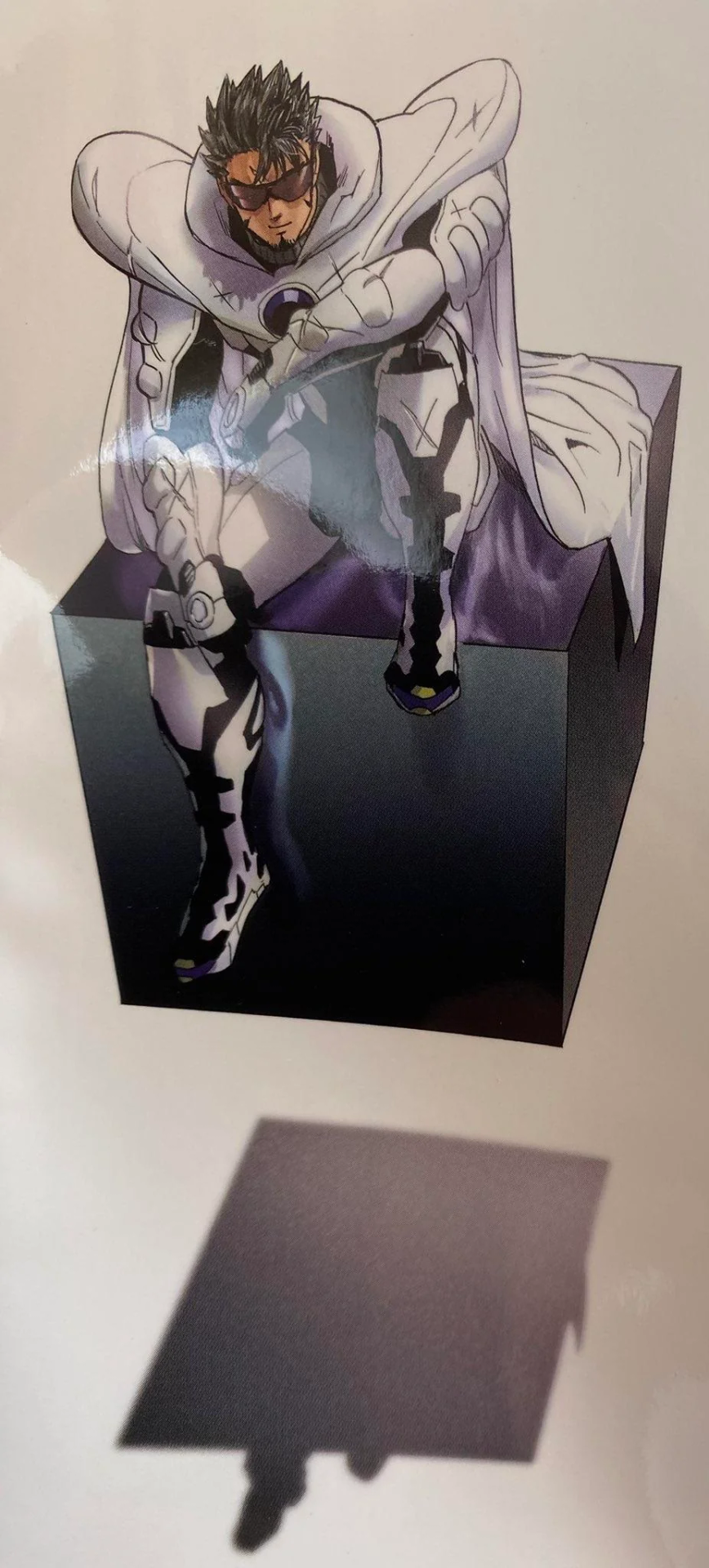
Inner material
All translations in this section courtesy of u/Diego-Aguilar35
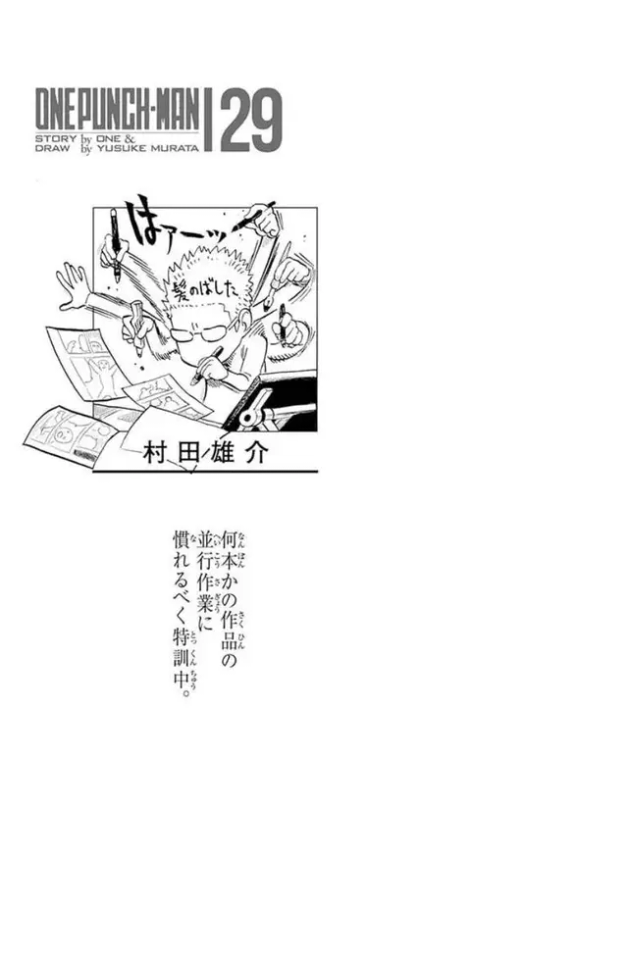
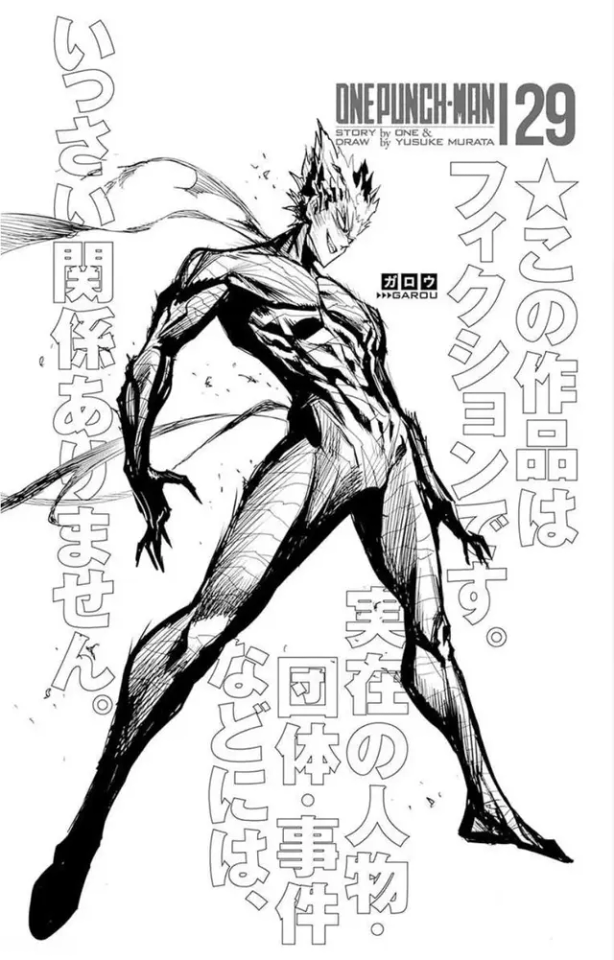
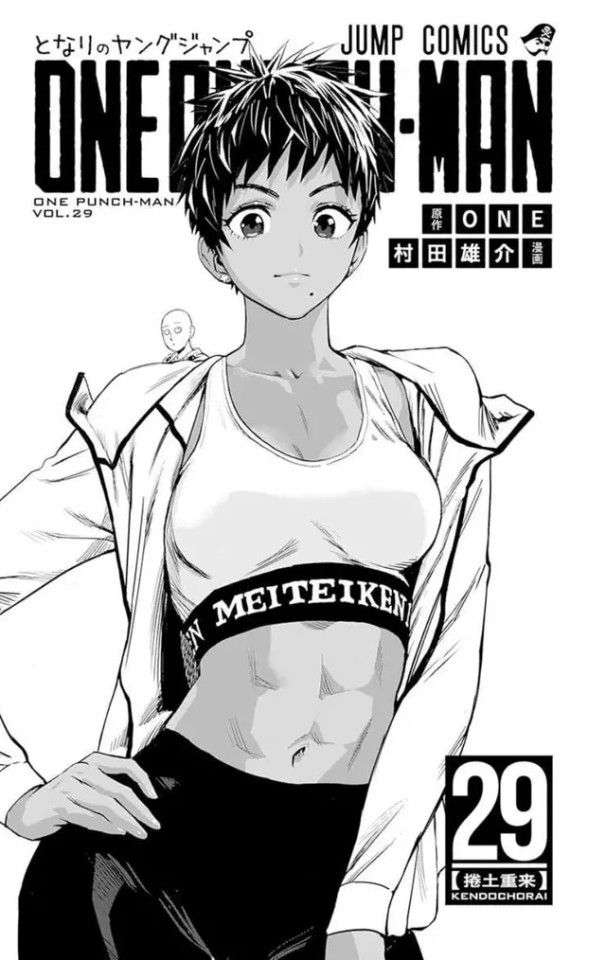
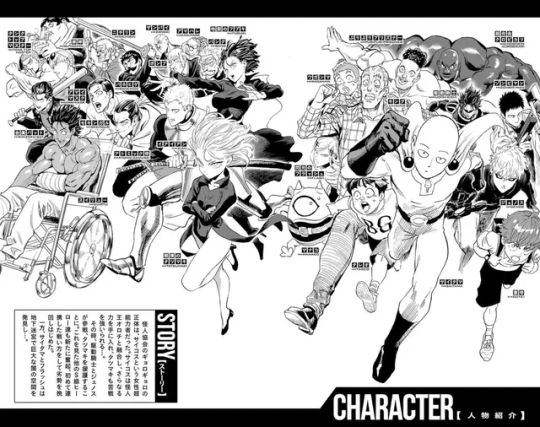
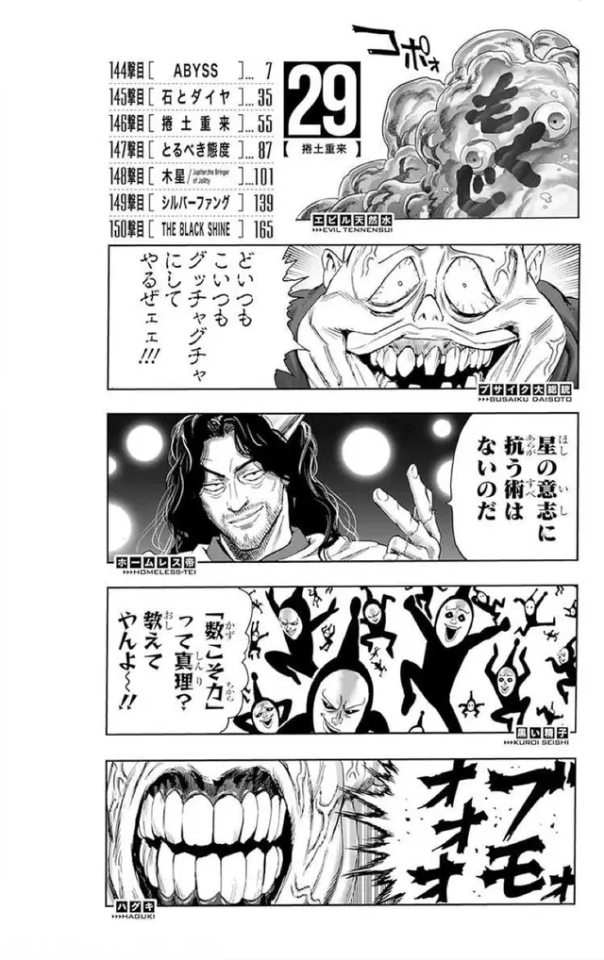
Translations:
Author page: "I'm currently undergoing special training to get used to working on several works in parallel."
Disclaimer page
Volume title: Rejuvenated Offence
Synopsis: The leader of the Monster Association, Gyoro Gyoro, is revealed to be a female psychic named Psykos. Psykos fuses with Monster King Orochi and gains even more power, gaining the upper hand on Tatsumaki...
At that time, Drive Knight and Genos join the battle and support Tatsumaki. Seeing this, the other S-class heroes became inspired and began to fight in a coordinated manner for the first time to make up for their inferiority.
Meanwhile, Saitama and Flash discover a huge dark space in the underground labyrinth...
Index:
Ch. 144: Abyss
Ch. 145: Stones and Diamonds
Ch. 146: Rejuvenated Offence
Ch. 147: How to Behave.
Ch. 148: Jupiter, the Bringer of Jollity.
Ch. 149: Silver Fang.
Ch. 150: The Black Shine
Bonus images
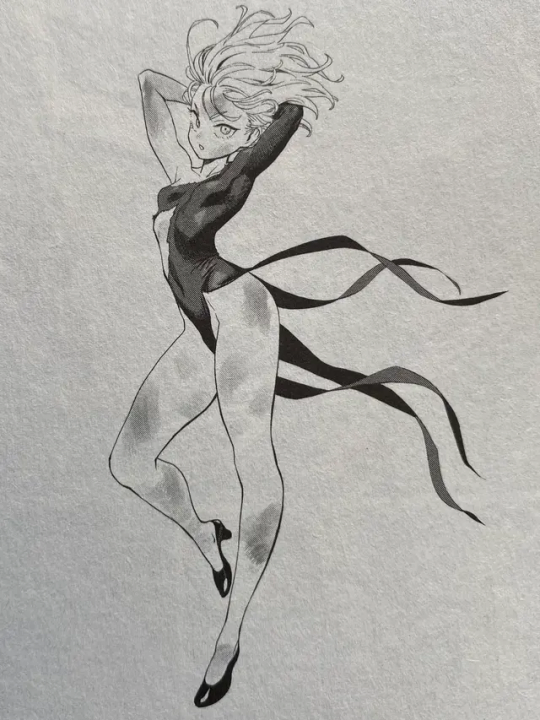


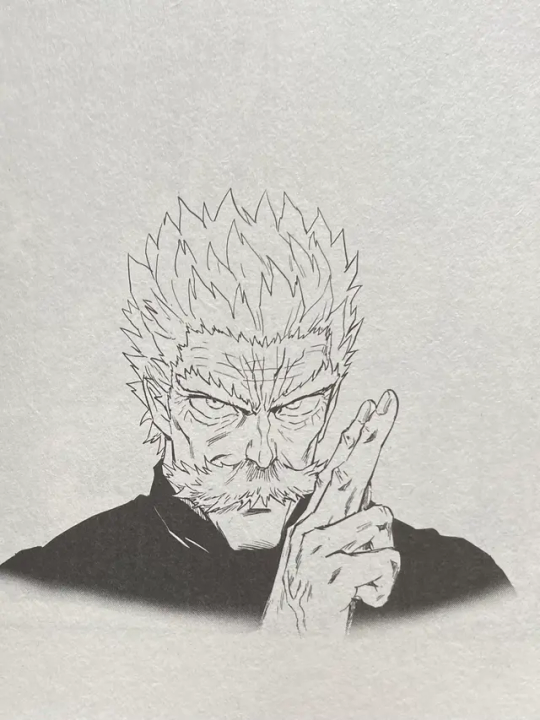
#OPM#one punch man#volume 29#official art#way too many characters to tag#Blast#Saitama#Flashy Flash#Manako#Genos#So much good stuff!#Garou getting his own page -- he'll be back soon enough#Genos doggedly protecting Tatsumaki -- a very nice inversion from volume 28#The inner back cover of Amai Mask Iaian and Atomic is really great foreshadowing: whatever this new arc brings will be something else!#gosh -- eh make your own meta this art is full of character and plot
174 notes
·
View notes
Text



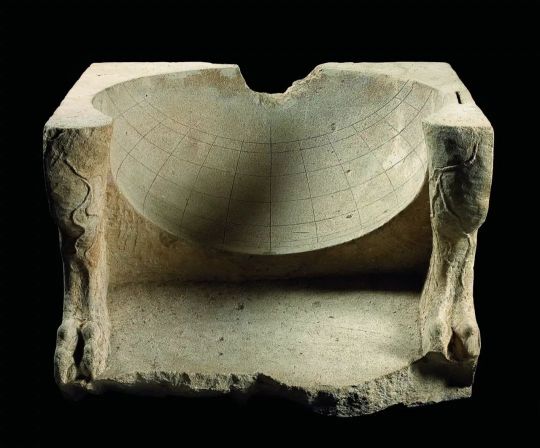
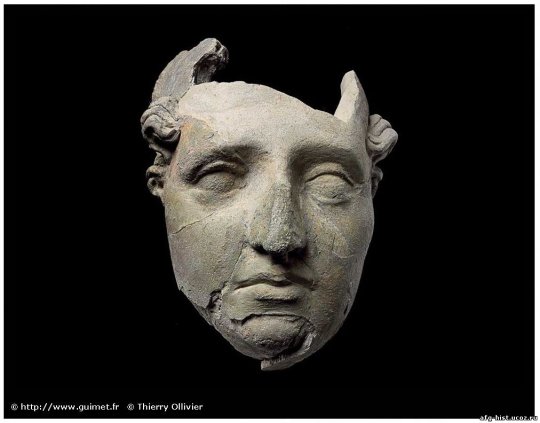
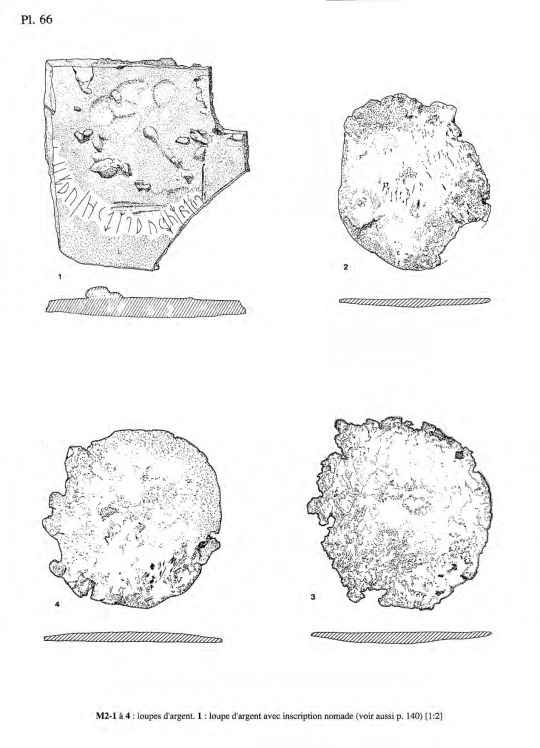
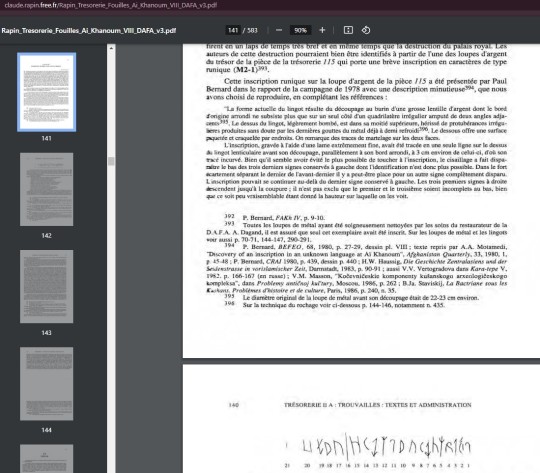
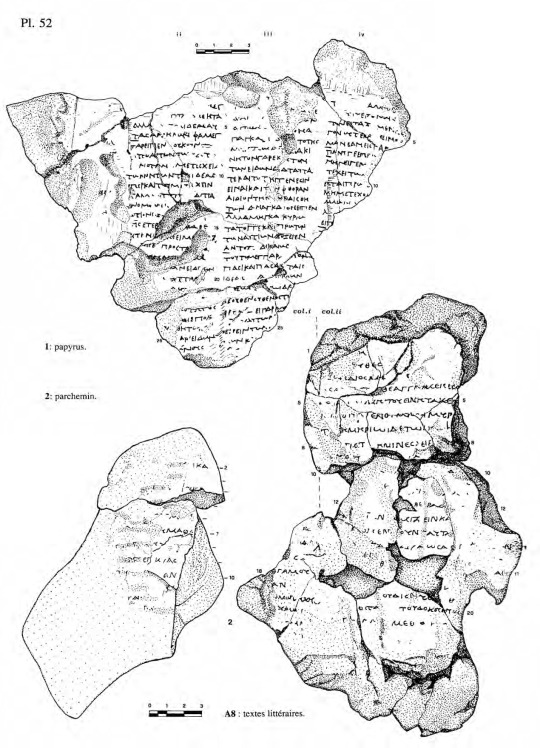
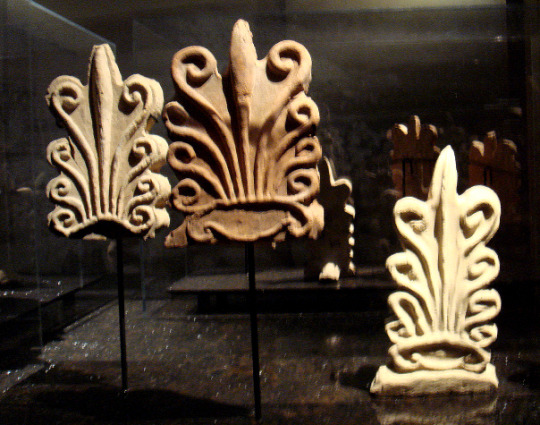





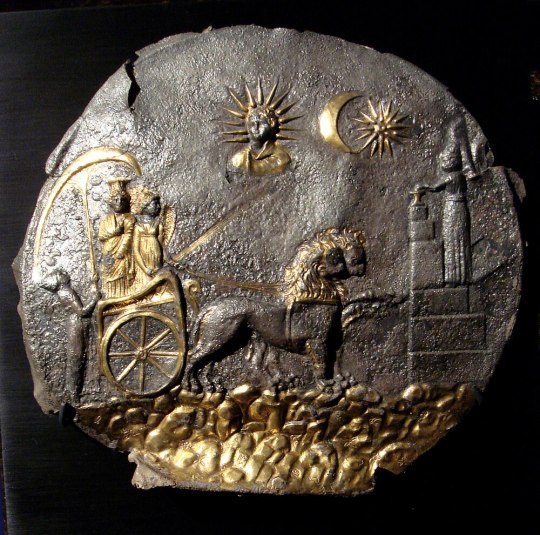

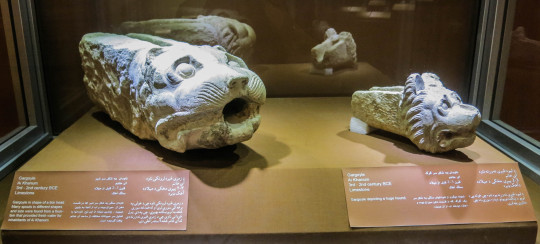

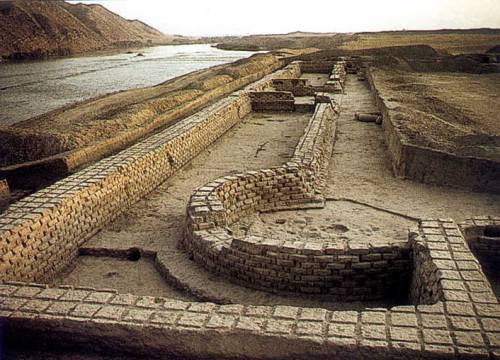



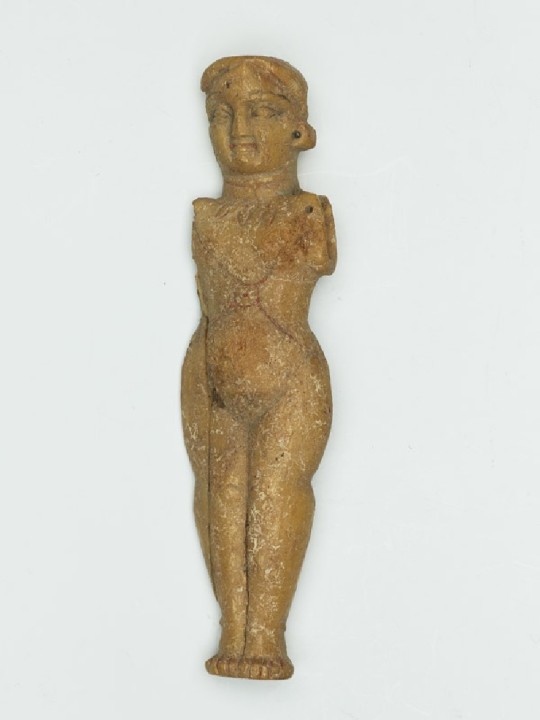





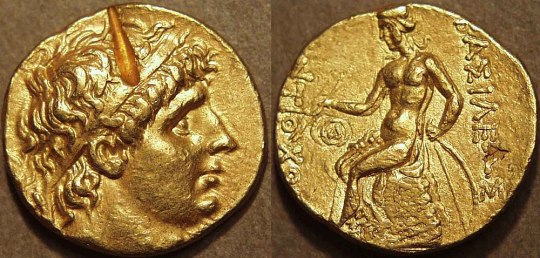

Ai Khanoum 3rd C. BCE - 2nd C. CE. More images on my blog, link at bottom.
"These wise sayings of men of old,
The words of famous men, are consecrated
At holy Delphi, where Klearchos copied them from carefully
To set them up, shining from afar, in the sanctuary of Kineas.
As a child, be well behaved;
As a young man, self-controlled;
In middle age, be just;
As an elder, be of good counsel;
And when you come to the end, be without grief.
—trans. of Ai Khanoum stele by Shane Wallace and Rachel Mairs.
Ai-Khanoum (/aɪ ˈhɑːnjuːm/, meaning Lady Moon; Uzbek Latin: Oyxonim) is the archaeological site of a Hellenistic city in Takhar Province, Afghanistan. The city, whose original name is unknown, was likely founded by an early ruler of the Seleucid Empire and served as a military and economic centre for the rulers of the Greco-Bactrian Kingdom until its destruction c. 145 BC. Rediscovered in 1961, the ruins of the city were excavated by a French team of archaeologists until the outbreak of conflict in Afghanistan in the late 1970s.
The city was probably founded between 300 and 285 BC by an official acting on the orders of Seleucus I Nicator or his son Antiochus I Soter, the first two rulers of the Seleucid dynasty. There is a possibility that the site was known to the earlier Achaemenid Empire, who established a small fort nearby. Ai-Khanoum was originally thought to have been a foundation of Alexander the Great, perhaps as Alexandria Oxiana, but this theory is now considered unlikely. Located at the confluence of the Amu Darya (a.k.a. Oxus) and Kokcha rivers, surrounded by well-irrigated farmland, the city itself was divided between a lower town and a 60-metre-high (200 ft) acropolis. Although not situated on a major trade route, Ai-Khanoum controlled access to both mining in the Hindu Kush and strategically important choke points. Extensive fortifications, which were continually maintained and improved, surrounded the city.
Many of the present ruins date from the time of Eucratides I, who substantially redeveloped the city and who may have renamed it Eucratideia, after himself. Soon after his death c. 145 BC, the Greco-Bactrian kingdom collapsed—Ai-Khanoum was captured by Saka invaders and was generally abandoned, although parts of the city were sporadically occupied until the 2nd century AD. Hellenistic culture in the region would persist longer only in the Indo-Greek kingdoms.
It is likely that Ai-Khanoum was already under attack by nomadic tribes when Eucratides was assassinated in around 144 BC. This invasion was probably carried out by Saka tribes driven south by the Yuezhi peoples, who in turn formed a second wave of invaders, in around 130 BC. The treasury complex shows signs of having been plundered in two assaults, fifteen years apart.
Although the first assault led to the end of Hellenistic rule in the city, Ai-Khanoum continued to be inhabited; it remains unknown whether this reoccupation was effected by Greco-Bactrian survivors or nomadic invaders. During this time, public buildings such as the palace and sanctuary were repurposed as residential dwellings and the city maintained some semblance of normality: some sort of authority, possibly cultish in origin, encouraged the inhabitants to reuse the raw building materials now freely available in the city for their own ends, whether for construction or trade. A silver ingot engraved with runic letters and buried in a treasury room provides support for the theory that the Saka occupied the city, with tombs containing typical nomadic grave goods also being dug into the acropolis and the gymnasium. The reoccupation of the city was soon terminated by a huge fire. It is unknown when the final occupants of Ai-Khanoum abandoned the city. The final signs of any habitation date from the 2nd century AD; by this time, more than 2.5 metres (8.2 ft) of earth had accumulated in the palace.
While on a hunting trip in 1961, the King of Afghanistan, Mohammed Zahir Shah, rediscovered the city. An archaeological delegation, led by Paul Bernard, unearthed the remains of a huge palace in the lower town, along with a large gymnasium, a theatre capable of holding 6,000 spectators, an arsenal, and two sanctuaries. Several inscriptions were found, along with coins, artefacts, and ceramics. The onset of the Soviet-Afghan War in the late 1970s halted scholarly progress and during the following conflicts in Afghanistan, the site was extensively looted."
-taken from Wikipedia
...
"The silver ingot engraved with runic characters found during the excavations of the Treasury could suggest they were Sakā/Sai. This inscription comprises 21 characters of a script and a language that are unknown and both attributed to nomadic people of Sakā origin, by comparison with a dozen similar inscriptions coming from an area extending from Ghazni in Afghanistan to Almaty in Kazakhstan, and dated between the 5th century BC and the 8th century AD."
-taken from Ai Khanoum after 145 BC: The Post-Palatial Occupation by Laurianne Martinez-Sève, University of Lille, 2018
#ancient history#antiquities#art#paganism#statue#museums#sculpture#history#greek art#greek gods#ancient greek#greek myth#scythian#pagan#ancient art#afghanistan
186 notes
·
View notes
Text

An aerial view of the U.S. Navy Battle Group Echo underway in formation in the northern Arabian Sea on 1 November 1987. The ships are, from the top, right to left,
Row 1:
USNS Hassayampa (T-AO-145),
USS Leftwich (DD-984),
USS Hoel (DDG-13);
Row 2:
fleet replenishment oiler USS Kansas City (AOR-3),
USS Bunker Hill (CG-52),
USS Robert E. Peary (FF-1073);
Row 3:
USS Long Beach (CGN-9),
USS Ranger (CV-61),
USS Missouri (BB-63);
Row 4:
USS Wichita (AOR-1),
USS Gridley (CG-21),
USS Curts (FFG-38);
Row 5
USS Shasta (AE-33),
USS John Young (DD-973) and
USS Buchanan (DDG-14) . USN Image PH3 Wimmer, U.S. Navy
57 notes
·
View notes
Text


Knitting in Victorian England
I wrote this for a class on Victorian Literature because my professor let me research knittinf and make a cape instead of writing a literary analysis paper. The cape that is discussed from The Art of Knitting is what I created for this project, with the illustration from the book on the top right and the cape I knit on the left. The book is from 1892 and is free on Internet Archive, and Engineering Knits on YouTube made a wonderful video about it. (More photos of the cape at the end!)
Knitting experienced a surge of popularity in Victorian England, and was even a topic of discussion in Charlotte Bronte’s Jane Eyre. After gaining popularity due to industrialization, knitting became a common pastime for women. Knitting was important because it existed as a way for Victorian women of all classes to be seen as virtuous and gave them the look of domesticity, while additionally functioning as a means of income for working-class women by either knitting or writing about knitting.
Industrialization shifted the view of knitting from economic necessity to a fashionable pastime for gentry women. In 1589 the first mechanical knitting machine was invented in Nottingham, which industrialized the knitting industry (“The History of Hand-Knitting"). Dyed wool trade with Germany and the subsequent booming industry of knitting pattern books turned knitting into something more accessible and artistic than solely practical (Rutt 112). Knitting became popular and fashionable for gentry women around 1835 (Rutt 111). Women of all classes have knitted long before the Victorian period, but the industrial changes shifted knitting to a popular and fashionable pastime for gentry women, in addition to the economic necessity for working-class women.
Knitting served as a way to keep women wholesomely busy. In The Art of Knitting, a quote from the beginning by Richter reads “A letter or a book distracts a woman more than four pair of stockings knit by herself” (qtd in The Art of Knitting 2). Knitting kept women busy without opening them up to new ideas that came from letters and books. Furthermore, a writer in The Magazine of Domestic Economy writes how useless the items (upper-class) women made were, but praises knitting in its effort “to rid of those hours which, but for their aid, might not be so innocently disposed of” (qtd in Rutt 112). Concentrating on knitting produces something at the end of the hours of challenging work but does not expose women to any material that the Victorians would deem dangerous or immoral. Thus, even when women made something useless, they were keeping themselves busy in a virtuous way.
Knitting also gave women the feminine and domestic look that was expected of them in the Victorian era. This can be seen in Jane Eyre with Jane’s description of Mrs. Fairfax upon their meeting. Jane thinks, “[Mrs. Fairfax] was occupied in knitting; a large cat sat demurely at her feet; nothing in short was wanting to complete the beau-ideal of domestic comfort” (Bronte 145). This is the first time the reader sees Mrs. Fairfax, surrounded by a warm fire, a cat and engaged in a feminine pastime. She is the image of domesticity. Jane admires Mrs. Fairfax, in part, for the comfort her nature, including knitting, brings. Mrs. Fairfax shows the role knitting plays into the idea of women as domestic creatures.
Certain forms of knitting made women appear elegant. Frances Lambert, author of 1842 manual The Handbook of Needlework, advises women to knit using the common Dutch knitting method, in which the yarn is held over the fingers of the left hand and the needles pointed upwards, because it was seen as a more elegant style of knitting (Rutt 113). While Rutt notes that this method was a faster way of knitting, Lambert does not comment on this, but instead focuses on its aesthetic qualities. This style of knitting was popular because it allowed for the look of style that was mandatory in women’s lives.
While gentry women were often restricted to making less practical knit items, some knitting authors disparaged this for frivolity and immorality. Working-class women did not have this criticism as the things they made were out of practicality and meant for regular use. In picking yarn color and material, Mlle Riego de la Branchardiere, author of Ladies Handbook of Knitting, Netting and Crochet writes “...and let her be careful to make all she does a sacrifice acceptable to her God” (qtd in Rutt 116). Rutt asserts that although Victorian knitting is seen as producing useless knits, some authors disparaged this (117). They instead encouraged women to focus on what they saw as the spiritual aspects rather than on aesthetics, as everything women did, including knitting, should enhance their virtue.
While knitting was popular as a pastime, it was still used out of economic need and served as a way for working-class women to earn money. Knitting was taught in orphanages and poor houses, with the first knitting school opened in Lincoln, Leicester, and York in the late 1500s. One school in Yorkshire was established for boys and girls who were “not in affluence” (“The History of Hand-Knitting"). The first knitting book, titled The National Society's Instructions on Needlework and Knitting, published in 1838, was an instructional manual for teachers to teach poor students the art of knitting and needlework. Knitting was used as a personal hobby, but also as a way for working-class people to support themselves.
The importance of knitting to working-class women can be seen in Jane Eyre. St John tells Jane, “It is a village school: your scholars will be only poor girls—cottagers’ children—at the best, farmers’ daughters. Knitting, sewing, reading, writing, ciphering, will be all you will have to teach” (Bronte 541). Knitting will be a way for these young girls to get jobs and to be able to make clothes for themselves and their families. In this way, knitting was more than a fashionable and artistic hobby, but a necessity for many working-class women.
In addition to manufacturing knitwear, women were able to make substantial livings writing about knitting. There was a boom in knitting and needlework publications during the 19th century (“The History of Hand-Knitting"). Some, such as The Art of Knitting, were published directly by publishers with no one associated author. Others were authored by women and were immensely successful. Cornelia Mee, who published shorter pamphlet-type knitting books, sold over 300,000 copies during their run in print (Rutt 115). Francis Lambert, author of two editions of My Knitting Book, sold a combined 65,000 copies and was translated into several languages across Europe (Rutt 113). Knitting gave working-class women opportunities to earn money, whether it was making knitwear or writing about knitting.
Knitting manuals contained various topics, such as some focusing on the religious and virtuous aspects of knitting as discussed previously, but most, if not all, had patterns in them. Under the chapter “Hoods, Capes, Shawls, Jackets, Fascinators, Petticoats, Leggings, Slippers, etc., etc.” in The Art of Knitting there is a pattern to knit a cape. Victorian knitting patterns tended to be broad and vague. Today's patterns are quite concerned with needle size and gauge, unlike many Victorian patterns. For instance, the cape pattern instructs the reader to “use quite coarse needles and work rather loosely,” (60).
Knitting was an important skill for women in the Victorian era, and they knit for a multitude of reasons. Knitting gave women the look of virtue, elegance, and domesticity. Working-class women used their knitting skills to support themselves and their families through making knitwear or writing about knitting.
Sources:
The Art of Knitting. The Butterick Publishing Co. 1892. https://archive.org/details/artofknitting00butt/page/60/mode/2up?ref=ol&vi ew=theater
Bronte, Charlotte. Jane Eyre. Planet eBooks. 1847.
“The History of Hand-Knitting" Victoria and Albert Museum.
Rutt, Richard. A History of Hand Knitting. Interweave Press. 1987. https://archive.org/details/historyofhandkni0000rutt/page/n7/mode/2up?vie w=theater


#knitting#historical knitting#history bounding#Victorian knitting#knitting history#cottagecore#victorian#knit cape#gothic#slow fashion#handmade#my knits
163 notes
·
View notes
Text
The Stacktangle Blanket Crochet Pattern will turn your expectations of the well known granny stitch on their head. This pattern uses stacked increases and decreases to turn simple stripes into complex looking colorwork. It isn't much harder than a regular granny stitch afghan, we've provided photo tutorials of the unusual stitches in the pattern.This project can be made in many sizes and is well suited for crocheters who are familiar with basic stitches and are ready to take on some new skills.

Patrick T. Stewart wrote the instructions and I ( Xandy Peters) made the charts. Whichever way you prefer to get your crochet patterns, you are covered.

Sizes: Baby (Throw, Twin*, Full*, Queen, King)
Finished Dimensions: 23" x 28" (57" x 50", 91" x 72", 91" x 94", 91" x 116", 108" x 116") / 58 x 71 cm (145 x 127 cm, 231 x 183 cm, 231 x 239 cm, 231 x 295 cm, 274 x 295 cm)
*Twin and Full size are turned 90* to fit on a bed.

Yarn: 4 Colors of worsted weight (#4 Medium) blanket yarn such as:
Loops & Threads Soft Classic, 354 yards (324 m) per 7 oz. 100% acrylic. Color A - Raspberry, Color B - Wine, Color C - Clay.
Red Heart Super Saver Solids, 364 yards (333 m) per 7 oz. 100% acrylic. Color D - Orange.
More yarn info is in the image below.
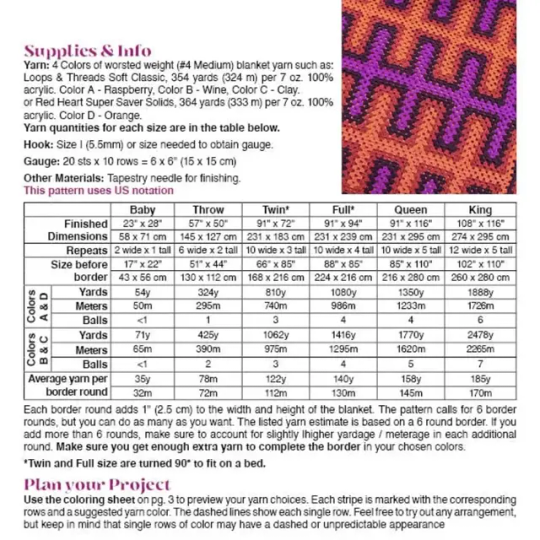
Hook: Size I (5.5mm) or size needed to obtain gauge.
Gauge: 20 sts x 10 rows = 6 x 6" (15 x 15 cm)
Other Materials: Tapestry needle for finishing.
This pattern uses US notation


Find the pattern on Ravelry or on xandypeters.com
39 notes
·
View notes
Text

KARL SCHWANZER
BMW OFFICES, 1973
München, Germany
Image © Bundesarchiv B 145 Bild-F062779-0027
#architecture#design#architect#art#archdaily#designer#artwork#photography#juliaknz#form#monolith#karl schwanzer#austrian architect#building#munich#bmw#urban space#space#context#facade#highrise
83 notes
·
View notes
Text

#naruto#uchiha itachi#chapter 145#+mikoto#+fugaku#heyy everyone it's that image from the thing#crazy how genuinely iconic this sequence is it feels strange to go through it as an actual story#like damn this is the Uchiha Massacre.#you know what i mean?
47 notes
·
View notes
Text
From the Inquisitor to the Baptist: The Evolution of John Seed

Deducing John’s personality from early development pictures is not easy… Still, it’s possible to make conjectures based on his appearance and attitude.
All the sources and references indicated by the superscript numbers will be given in the last post.
Part 3: Personality and morals (concept art, promotional content, and side material)
In the early portrait of the Seed family¹, John’s formal and stylish outfit suggests he’s probably wealthy and takes care of his appearance. In contrast, the blood running from his knuckles, which can either be his or belong to someone he has recently punched, hints at the fact he’s a violent man. The way his foot is almost triumphantly resting on the crate gives the impression that he’s self-assured and not easily impressed. I would describe this John as a “classy criminal”: sophisticated on the surface, but also cold and brutal.
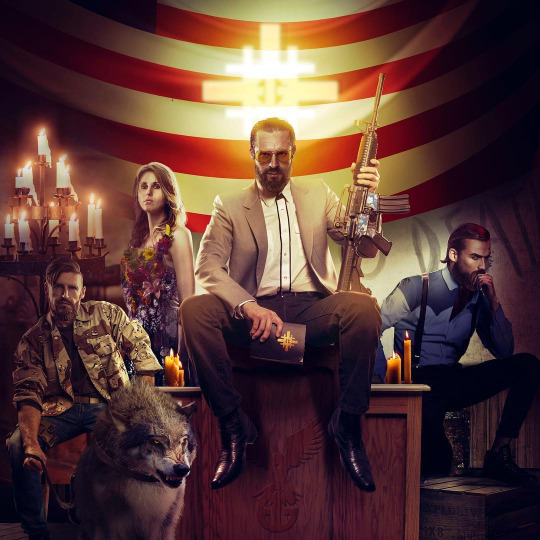
In the two promotional images inspired by The Last Supper², as well as the development visuals for the pictures³¯⁴, John looks confident and stylish again, wearing expensive-looking clothes and accessories.

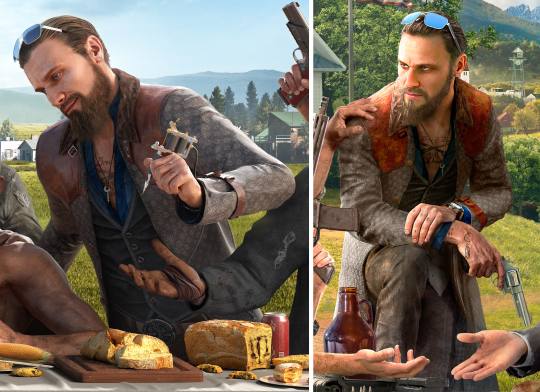
In the first “Last-Supper-like” image, his smile is almost cocky and he apparently has just finished tattooing someone against their will.
In the second, he has a vaguely menacing look on his face, a revolver in his hand, and his foot resting on something (probably a chair or bench), which conveys a feeling of self-importance, self-confidence, and dangerousness.
His infantry tattoo might indicate that he was originally going to have a military background, but nothing is certain.
Far Cry Absolution was the first time John was given a “voice” and we could learn more about his personality. While the book was not written by a member of the Far Cry 5 team, its author, Urban Waite, explained in an interview that he got to meet “various heads of development”, such as Dan Hay (Executive Producer, Creative Director, and Writer)³⁸. What he wrote is based on the information he was given at the time, and it most likely had to be approved by Ubisoft, so even though not everything in the novel is still relevant, I think it’s a good indicator of what John was like in the game’s early stages of development.
In the interview, Urban Waite described him as “a loose cannon” (compared to Joseph) and Absolution’s “main bad guy”, but he doesn’t think they’re “completely evil”.
In the book, John is self-confident, calm, and speaks eloquently. When he threatens people, he does it politely, as if he’s simply asking something, but people know they don’t really have a choice... On page 48, he shoots at a bear with a rifle. He doesn’t kill the animal, which then runs away, but this scene is surprising because he never hunts in Far Cry 5, and no one says he likes to do so. That said, his ranch is still decorated with taxidermied animals, so maybe hunting indeed used to be one of his hobbies at some point during the development of the game.
In the novel, he clearly has faith in the Project. He still Cleanses people before hearing their Confession, gives them a tattoo that reveals what he thinks their sin is, and makes them Atone by cutting it out. Like in the game, while he uses Bliss to pacify the converts, he still asks for their consent. He explains to Mary May that Eden’s Gate can give her a new life and that they can be a family. She needs to Atone so her sin will not stand before her and the gates of heaven, and he can save her. “You have been alone”, he says on page 116. “You have lived without the word of The Father and now you will be alone no more.”
The hunting and the constantly calm demeanor seem a bit odd, but his beliefs, methods, and even “showmanship” (page 145) at times are consistent with what John does in Far Cry 5.
There is one thing, however, that is not.
While it’s clearly said in the novel that Eden’s Gate forbids alcohol, and this is something John apparently takes seriously (he “asks” Mary May not to serve alcohol anymore and comments that Lonny, a cultist, was “not a true believer” because he was still drinking), it’s not mentioned anywhere that they also disapprove of fornication, as we know they do in the game. It’s very likely that the rule simply didn’t exist yet in the minds of the Far Cry 5 writers, but as a consequence, in Absolution, John has a lover. Her name is Holly, and this is what she tells Will Boyd, the protagonist, on page 101:
I fuck John from time to time and he tells me shit. He tells me shit I shouldn't hear. I don't have a fucking clue about half of it, but the other half is fucking out there. The Father and his scripture and all this shit about the prophet and the coming fire of Hell. Sinners and saints. Salvation and damnation.
While Holly’s language is surprisingly vulgar for a cultist (compared to the way they talk in Far Cry 5), the fact that she reveals she sometimes sleeps with John is even more disconcerting. Not only is she also a member of the Project, so it seems strange that she would openly and shamelessly admit she regularly breaks its rules, but as I’ve just mentioned, John also seems to want to follow and enforce the rules, so being in a relationship with someone sounds out of character. Holly even says the “thing [she has] with him” is “serious enough to have [her] waiting” for him outside at night.
I can’t see this happening in Far Cry 5 at all, and while a character named Holly is mentioned (Holly Pepper, Henbane River) and they tried to make it look like she was the same woman, the Holly from the game has a different address and backstory, as well as a girlfriend named Charlie³⁹.
But, again, the “no fornication” rule most likely didn’t exist when Urban Waite wrote the book, so John didn’t technically break it in Absolution. While this seems out of character now, the novel suggests that, several months before the release of the game, it wouldn’t have been absurd for John to be in a sexual relationship with another cultist. To me, this is proof that his personality, as well as the Project in general, changed. And if the rule did exist at the time, that would mean John used to be a hypocrite. As you will see, other things suggest this was true at some point…
In Inside Eden’s Gate¹², John is eloquent and still has a vaguely menacing aura. His self-confidence is once again palpable; he looks like a man who’s totally in control of whatever situation he’s in and knows what he’s doing. He introduces the Father to a crowd, is in charge of baptizing new converts, and even actively helps track and find the movie’s protagonists, not once losing his cool or air of confidence. He looks even more stoic than Jacob, which is quite unusual if we compare this version of the two brothers to their in-game counterparts.
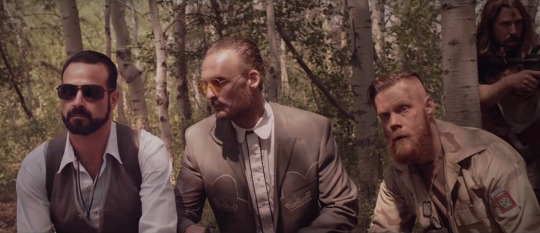
Like in Absolution, while it’s clear that he won’t hesitate to threaten or hurt people, he seems to always be naturally self-assured. This man looks a bit cold and scary, but he also seems emotionally mature and stable, and this is far from being the case with John in Far Cry 5. However, nothing in the film suggests he doesn’t believe in Joseph and the Project’s doctrine.
In the live-action TV spot “Anything Can Happen, Everything Will”¹⁵, we only briefly see John, but he looks the same as he does in the film: calm, confident, and not to be messed with:

In The Book of Joseph²⁰, as a child, John is described by his brother as “delicate” and sensitive. When he was adopted by the Duncan family, they essentially tortured him for years, thinking “the Evil within him had to be exterminated”, and they “turned an innocent child into a monster skilled at concealment and full of suppressed anger.”
When Joseph found him as an adult, he had become a lawyer, and while “physically, he was society’s very model of success”, John Duncan was also a heartless chameleon, able to show other people the face they wanted to see, so they usually felt comfortable enough to tell him everything, even their darkest secrets… and he could then (potentially) use that information against them.
He was rich, partly because he had inherited his parents’ fortune when they died, and powerful thanks to his job and numerous connections, but deep down, he hated everyone and everything, himself included. He was also suffering from a drug and sex addiction. After he was reunited with Joseph, John Duncan was free to become John Seed again.
While he’s still the Project’s Confessor, he’s not in constant disguise anymore or as full of hatred as he used to be. In the game, in the mission “The Confession”, he also briefly mentions his abusive parents, how their violence changed him, his past addictive tendencies, and how Joseph helped him see life differently, so the book doesn’t contradict what Far Cry 5 tells us about John; it only gives more details about his backstory.
In the video “Far Cry 5: Why John Seed Is Your Charmingly Deadly Enemy”²¹, Dan Hay (Executive Producer, Creative Director, and Writer) and Jean-Sébastien Décant (Narrative Director and Writer) talk about the character. The latter explains that John is almost “in charge of PR” for Eden’s Gate, but also that he’s “the most tormented and psychotic one” because of what happened to “the cute kid” he was. He also says it was Joseph who “brought him back on track” but that, now, John always wants to impress him, sometimes to the point of almost “[losing] it” and having to be “reigned back in”, and this is what makes him dangerous in the game.
As for Dan Hay, he says John has experienced “great trauma in his life” and, because he has survived it, “almost feels like he’s a superman”. He is a “potent character” who has been through everything, can hardly be surprised anymore, and “almost knows everything the player is going to do”. He also mentions that John mostly wants to impress Joseph and that this affects their relationship because, by trying too hard, John usually ends up not doing things right, and Joseph then has to intervene.
By the way, this is also what Drew Holmes, the game’s Lead Writer, explained in a now-deleted interview⁴⁰:
John Seed, who is the youngest, sort of wants to be recognized by his older brothers as having value. But he continually screws up, so Joseph chides him saying he’s not doing the things [he’s] supposed to do.
Dan Hay also says John is a complex villain who does “bad stuff” but will not hesitate to tell the Junior Deputy, the protagonist, that they aren’t irreproachable either. For the first time, the two writers also talk about John’s philosophy, The Power of Yes. They explain how it stems from his childhood and how he uses it for the cult, sometimes to the point of excess.
What they explain in the video is totally consistent with The Book of Joseph and what we will later see in Far Cry 5, but it contrasts a little with the John Seed we had previously met in promotional material, Far Cry Absolution, and Inside Eden’s Gate. This new version of John is more emotional, not as calm and collected as early versions of him seemed to be. He has evolved as a character, and deep down, he became quite tortured. He’s not as self-confident as he appears, and he strives to impress the Father because he cares a lot about his opinion.
More evidence of this evolution can be found in early and deleted content for the game.
To be continued…
#far cry 5#john seed#joseph seed#jacob seed#faith seed#far cry absolution#inside eden’s gate#the book of joseph
80 notes
·
View notes
Text

The scale of time when these sculptures were made is difficult for a human mind to comprehend. Fat women have been appreciated and revered in art since art began. The modern view is the outlier, not the norm.
Image Rights (Top to Bottom)
Photo by Louvre Museum, CC BY-SA 2.0, via Wikimedia Commons
Photo by Rob Koopman, CC BY-SA 2.0, via Wikimedia Commons
Photo from Mellaart 1967, Çatal Hüyük: A Neolithic Town in Anatolia 145, plate 79, used under fair dealing
Photo by Nevit Dilmen, CC BY-SA 3.0, via Wikimedia Commons
Photo by Jason Quinlan, used under fair dealing
Photo by 120, CC BY 3.0 via Wikimedia Commons
Photo by Petr Novák, CC BY-SA 2.5, via Wikimedia Commons
Photo copyright Smithsonian Institution, used under fair dealing
Photo copyright H. Jensen, Universität Tübingen, used under Fair Dealing
638 notes
·
View notes
Text
ANIMATED COMMISSIONS!!
Hello, all! If you've been following me for a bit, you know that I animate things and I do commissions- but you might not know that I also do ANIMATED COMMISSIONS!
That's right! For the reasonable price of money, I will make your characters and scenarios MOVE in GLORIOUS TECHNICOLOR!
When you order an animation from me, you receive a digital bundle of the image sequence, several gifs (both solid background and transparent!), and an mp4 of the content in 1920X1080 resolution.
I work by an hourly rate and give estimates on total cost before and during the process based on any needed revisions!
One second of rough animation will cost 20 USD. Frame rate does not affect price! Further polishing of the animation adds onto the price- linework adds 20 USD, color adds 10 USD, and shading adds 20 USD. One background will cost 5 USD.
Visual aids below!
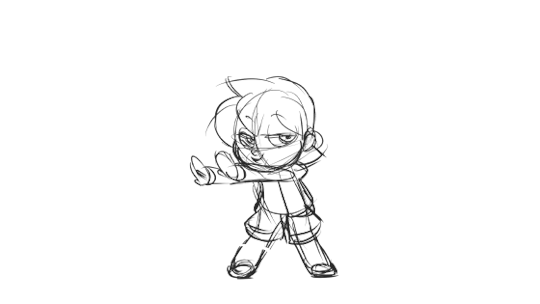
This is 2 seconds of rough animation, nothing else added! Something like this would cost about 40 USD.

This animation is a 2-second lined loop! Something like this would cost approximately 80 USD.
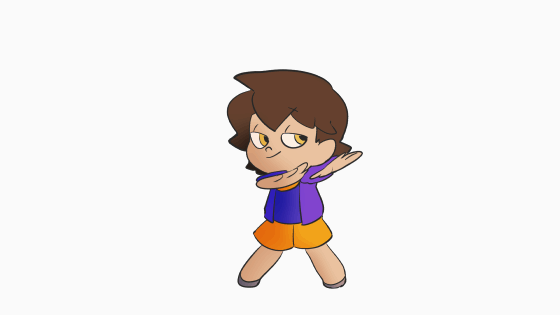
This version is lined AND colored! it would cost 90 USD.

This version is the whole shebang! For 2 seconds of lined, colored, shaded work with a background (moving or otherwise), it would cost 145 USD.
I have a BFA in animation and would love to work with those interested in ordering a commission!
email: [email protected]
discord: owl.dart
patreon: https://www.patreon.com/owldart
kofi: https://ko-fi.com/owldart
tumblr: you’re already here!
website: https://www.owldart.com
74 notes
·
View notes
Text
Chainsaw Man Chapter 145: Kumbaya

Wow, a whole lot of questions have arisen from this chapter. Yoshida appears, Asa makes a move, the prophecy creeps ever forward as the Chainsaw Man church is captured. Fujimoto can make a lot happen in a chapter when they really want to.
So, Mr. Public Safety Devil Hunter here says two interesting things to open up this chapter. He talks about wanting War to mutually destroy Chainsaw Man, and he alludes to Chainsaw Man being God. Yeah, capital G there.
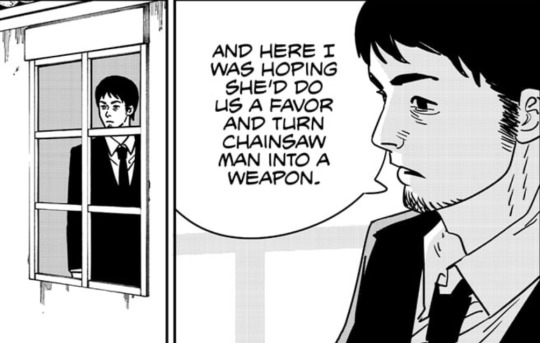

So, what do they mean? Clearly, Public Safety (through the Future Devil) became aware of the Nostradamus Prophecy a while back, and have understood that Denji has a key role to play in it. Fami corroborates this theory as she tries to weaken him.
And the second image. Well, that one's sort of obvious. Chainsaw is revered as a Devil unlike any other, the only ones we've not seen it conquer is the primal devils. Even then, he got pretty close with the Falling Devil.
Anyways, one of the big reveals of the chapter: the Justice Devil.
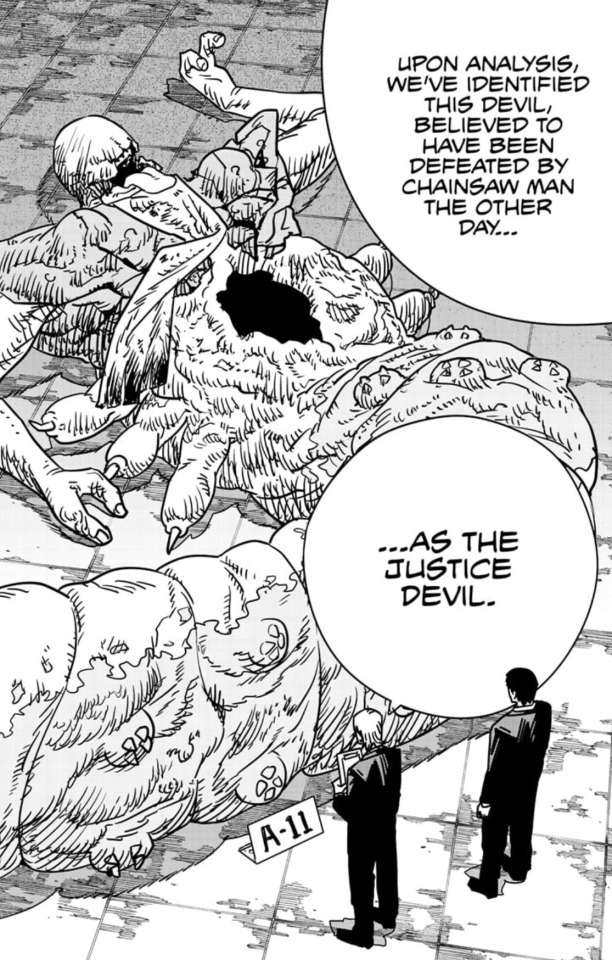
When you look at its design language, you see nothing of the fiendish appearances from previous instances of "justice devil" contracts. So what could be going on here?
There's a few ideas, but first its important to gather up the facts.
Firstly, the corpse of the Justice Devil was beneath the Chainsaw Man church. Secondly, Fami at the minimum had control of the Falling Devil. Third, the Justice Devil and Falling Devil appeared at sunset and the Falling Devil returned at sunrise. Fourth, the devil that has formed contracts with people throughout the story is claimed to not be the Justice Devil.
So, my first theory. The Justice Devil actually did form contracts with the individuals in question. However, these contracts weren't formed on Earth. Devils "forget" about Hell, but are a new iteration of themselves each time they appear on Earth. The "them" that exists in hell is the original, so what would happen if someone formed a contract with a devil in hell? It's not the most likely, as Fujimoto probably hasn't mislead readers with the identity of this Devil, but you never know.
The more likely theory though is that the Devil that formed a contract with these individuals under the guise of the Justice Devil, is the same one that gave Fakesaw Man his abilities. But what could it mean, is the real question. Does this unnamed Devil impart the abilities and nature of "Justice" onto individuals in how each person understands it? The class president and the Chainsaw Man church believer both sport at least a little similarity in design language with the idea of multiple heads, which makes sense given the selfish nature of each. Yuko's appearance though is largely different from theirs, which is once more understandable considering the difference in reasoning.
So, what could this devil that's been masquerading as Justice be? I think the one that comes to mind the quickest is "Desire", or something similar. The Devil requires the ability to fulfill the interests or needs of the individual, and to do so in a very direct way. Yeah, we've seen a lot of this "Justice" in Part 2, but we should remember that in part 1 almost all the devil contracts out there did not do anything to change the appearances of the individuals forming the contracts. The only example off the top of my head is the Zombie Devil.
But going further than that is the question of how Fami got this Devil on their side, and even further why she's playing so many angles at once. Betting on "both sides" she aims to kill Asa and Yoru, but also empower them through the Chainsaw Man church? There's a very long game going on here with Fami and the Nostradamus Prophecy, and I'm very very curious to see how it all ends up going down.
Anyways, here's another Asa door moment. Couldn't be a CSM protagonist without them.

Following this, two very big things happen. The first is the sun goes down. Drawing attention to this is signaling that another devil will appear. Whether it's a primal devil or not, or even potentially the revival of the Justice Devil I've no idea, but a threat looms on the horizon.
This idea begs the question of why the weapons were trying to create a massacre at the amusement park today though. It seems probable that their entire goal was to have a new devil appear come sunset (considering Barem's reaction), so it makes me wonder why they would try to do something so pointless.

The second though, is Asa's arm getting cut off. This is really big for two reasons. One, badass Yoshida in action looking like a young (and hot) Kishibe.
Secondly, and more importantly, it's the first time Asa's been severely injured since Yoru revived her. What are the mechanisms for regeneration and healing with Asa? How much can she heal, if it all? Is regeneration entirely on Yoru, does she have to be in control of the body to heal?
There's a lot of questions with this piece, because unlike all the other hybrids that have a "starter" for their transformation, Asa's is implicit. There's nothing that "kickstarts" her hybrid form, simply because she doesn't have one. Does that mean that she'd heal closer to how a Fiend might? That is, the act of transformation alone cannot regenerate or heal like it does for Denji?
I'm very very curious to see what happens here, because oddly enough this is a piece that can massively affect how we view exactly what Asa and Yoru are.

We're quickly barreling towards the date of July 18, 1999, the date of the last lunar eclipse of the 20th century, and with chapters like these we're piling on all sorts of curious odds and ends that will undoubtedly play a role in this impending night of terror. Really can't wait to see what Fujimoto does with it next.
#chainsaw man#csm pt 2#chainsaw man manga#csm manga#chainsaw man part two#chainsaw man part 2 spoilers#csm part 2#csm part two#csm spoilers#manga recommendation#manga review#anime and manga#manga#csm denji#miri sugo#sword man#sword devil#sword hybrid#flamethrower devil#flamethrower hybrid#csm barem#whip hybrid#spear hybrid#nayuta csm#nayuta#spear devil#whip devil#fumiko mifune#quanxi#katana man
55 notes
·
View notes